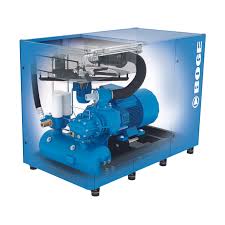In the rapidly evolving landscape of utility services, effective asset management has emerged as a pivotal factor in ensuring operational efficiency, reliability, and cost-effectiveness. Utility companies are faced with the challenge of maintaining a vast and diverse array of assets, ranging from power generation facilities and distribution networks to substations and equipment. In this article, we delve into the importance of utility asset management and highlight key strategies for optimizing performance and minimizing downtime.
Understanding Utility Asset Management
Utility asset management involves the strategic planning, operation, and maintenance of an organization’s physical assets to achieve its business objectives. For utility companies, these assets encompass a wide spectrum, including power plants, transformers, transmission lines, meters, and more. Effective management of these assets is crucial to delivering uninterrupted and high-quality services to customers.
Key Benefits of Utility Asset Management:
Enhanced Reliability: Well-maintained assets contribute to a more reliable energy supply. Regular inspections, maintenance, and repairs help identify and address potential issues before they escalate into major problems.
Improved Efficiency: Asset management strategies help streamline operations by optimizing asset utilization, reducing energy waste, and minimizing downtime. This leads to increased efficiency and reduced operational costs.
Cost Savings: Proactive maintenance and lifecycle management can extend the operational life of assets, deferring the need for costly replacements. This approach also prevents unexpected breakdowns that can incur substantial repair expenses.
Compliance and Safety: Asset management ensures compliance with industry regulations and safety standards. Regular monitoring and maintenance help mitigate risks and create a safer work environment for employees and the surrounding community.
Data-Informed Decisions: Modern asset management leverages data and analytics to make informed decisions. This data-driven approach enables predictive maintenance, resource allocation, and performance optimization.
Key Strategies for Effective Utility Asset Management:
Asset Tracking and Inventory: Maintaining a comprehensive inventory of all assets, including their specifications and maintenance history, is fundamental. This information provides insights into the condition of assets and aids in planning for replacements or upgrades.
Condition Monitoring: Implementing sensors and monitoring systems allows real-time tracking of asset conditions. This proactive approach helps identify anomalies, predict failures, and schedule maintenance before issues arise.
Predictive Analytics: By analyzing historical data and patterns, utility companies can predict asset performance and potential failure points. This enables timely interventions, reducing downtime and associated costs.
Prioritized Maintenance: Not all assets require the same level of attention. Implement risk-based prioritization to focus resources on critical assets that significantly impact service delivery and safety.
Integration of Technology: Embrace digital tools such as Computerized Maintenance Management Systems (CMMS) and Geographic Information Systems (GIS) to centralize asset data, streamline communication, and enhance decision-making.
Regular Training: Equip your workforce with the necessary skills to handle modern technologies and stay updated on industry best practices. Well-trained staff can contribute to more effective asset management.
Utility asset management is no longer just a matter of routine maintenance; it’s a strategic approach that can significantly impact a utility company’s performance and reputation. By adopting comprehensive asset management strategies and leveraging technology-driven solutions, utility companies can ensure reliable service delivery, optimize operations, and achieve long-term cost savings. As the energy sector continues to evolve, investing in robust utility asset management practices is a prudent step towards a more sustainable and efficient future.




